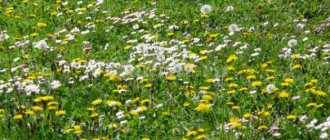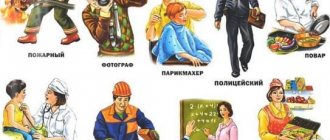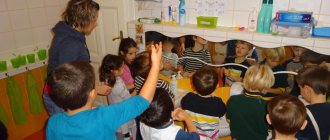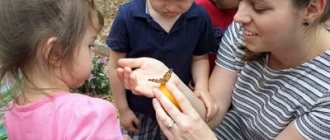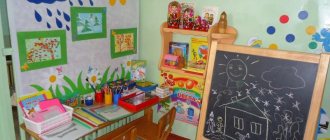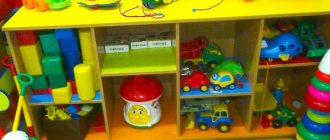Daytime nap
It takes 2 hours. The outline of the organization of a routine moment in the senior group includes preparation for bed: undressing independently, neatly folding clothes on a high chair, visiting the toilet. The teacher's assistant ventilates the bedroom. Before going to bed, you can read a calm fairy tale to the children or sing a lullaby. Sometimes children fall asleep listening to soft music. The teacher makes sure that the kids lie on their sides and keep their hands on top of the blanket.
They wake up the boys gradually. They are asked to perform simple exercises right in bed (stretching, arm movements, rotation of the feet). Then the children get up, do slight bends, and march in place. Older preschoolers must make their own bed. After this, hardening is usually carried out: walking on massage mats, rubbing with soft mittens. Under the guidance of a teacher, children can perform acupressure massage of the face, ears, and hands.
A summary of routine moments in the senior group helps the teacher plan his work. Thanks to him, everyday activities turn into developmental ones, which enhances their educational effect.
Admission of children
This is where the outline of routine moments begins. With children of the older group, the teacher works to solve the following problems:
- Obtaining information about the health status of pupils.
- Creating a good mood.
- Strengthening hygiene skills in children, including a neat appearance and neatness.
- Formation of polite behavior towards peers and adults.
Older preschoolers usually happily run into the group and share news with their friends. Particular attention should be paid to new students, as well as shy children. If the child is in a bad mood, the teacher should distract him with an interesting activity, a work assignment (watering flowers, wiping leaves).
In the summer, pupils meet outside. Children can be offered games with soap bubbles and pinwheels. At this age, it is recommended to conduct psycho-gymnastics, when children stand in a circle, enjoy the morning together, smile at each other, and say kind words.
Summary of the regime moment “Walk” in the senior group
In preschool institutions, much attention is paid to improving the health of pupils, their physical development, and preventing fatigue. The walk takes place twice a day: after educational classes, and also after afternoon tea. At this time, kids breathe fresh air and play outdoor games. They are allowed to make noise and run freely around the site. The walk may be canceled if there is strong wind, rain or temperatures below -15 °C.
In the older group, the implementation of routine moments is necessarily associated with the time of year and the topics of the educational program. The structure of the walk includes the following elements:
- Observation. It can last from 15 to 25 minutes, is carried out daily and is associated with seasonal changes. Preschoolers observe the work of adults, various natural phenomena, insects and birds, and study plants.
- Outdoor games. The optimal number of them during a walk is 3-4. Older preschoolers love competitions and relay races. They can be introduced to sports games: volleyball, football, hockey, badminton, basketball.
- Work. Children can work with rakes, watering cans and shovels. They are involved in caring for flower beds and vegetable gardens, harvesting autumn leaves, and clearing snow.
- Independent games. Kids can go on an imaginary journey, turn into pilots, pirates or sailors. The teacher creates conditions for the development of story-based and construction games. Sand, pebbles, water or snow can be used as materials.
- Individual work with children to develop lagging skills.
Preparation of a summary of routine moments in the senior group
The teacher must plan in advance his actions aimed at developing the necessary self-care skills in children. For this purpose, a summary of the regime moments is drawn up. In the older group, special attention is paid to “problem areas”, as well as children’s conscious attitude towards hygiene procedures.
When planning, the following structure is observed:
- Indication of the topic of the event (“Duty in the dining room”, “Preparing for naps”, “Washing”), as well as the group for which it is designed.
- Target. It is usually defined as strengthening self-care skills during dressing, eating, washing, etc.
- Tasks. They explain how the teacher is going to achieve the goals. Tasks are divided into developmental, educational and educational. The first are aimed at teaching children practical skills (tying shoelaces, using a fork and knife). Educational tasks form the need for order and cleanliness, introduce them to the rules of behavior and polite communication. Educational objectives expand our understanding of the world around us. So, while washing your face, you can have a conversation with your children about germs, and at lunch you can learn more about the profession of a cook.
- Methods. The teacher can use a verbal explanation, visual aids with action algorithms, or a demonstration of a practical skill.
- Equipment. If it happens in the dining room, then it will be dishes, tablecloth, napkins. In the bathroom, this role is played by soap and towel. Sometimes visual aids are used that illustrate the sequence of washing or dressing.
- Progress of the event. All the actions of the teacher, the explanations he gives to the children, poems, riddles, fairy tales, etc. are described in detail here.
Setting goals
Before drawing up a summary of the routine issues in the senior group, the teacher should familiarize themselves with the educational program. It indicates what hygiene skills should be developed at this age.
So, when washing, children should act quickly and independently and dry themselves with a personal towel. The habit of washing hands with soap before eating, after visiting the toilet and when dirty is established.
During lunch, children should eat quietly and carefully. They are taught how to properly handle a fork and knife and use a napkin. When sitting at a table, you need to remember about your posture. Coming out from behind him, the children push up their chair and thank the adults, as well as those on duty.
Children should dress and undress quickly, without the help of adults. Things and shoes are neatly put away in a locker in a certain order. The teacher creates in children the need to monitor the cleanliness of their clothes, pay attention to problems in their appearance, and eliminate them.
At the beginning of the school year, children are monitored. The identified “problem areas” are taken into account when organizing activities at critical times. In the older group, children are already familiar with the sequence of actions; a reminder from an adult is enough for them. Praise and encouragement are also actively used.
Washing
In the sixth year of life, children are taught to independently perform hygiene procedures based on an understanding of their benefits and necessity. A summary of the regime moment “Washing” in the senior group may include the following tasks:
- Formation of the need to wash hands after visiting the toilet, if they are dirty and before eating.
- Consolidating knowledge about various hygiene items (comb, soap, toothbrush, towel, etc.)
- Conveying awareness of the importance of personal hygiene.
- Cultivating a positive attitude towards the washing process.
The teacher uses posters with drawings and short captions, poems, and riddles about hygiene items. He makes sure that the children roll up their sleeves, use soap correctly, do not splash water, turn off the tap, dry themselves with individual towels and hang them up. It is better not to use comparisons with other children. It is more useful to notice the personal progress of each student (“Today you yourself remembered that you need to roll up your sleeves”).
Dressing
Preschoolers are taught to independently monitor their appearance, adjust their collar in a timely manner, tuck their shirt into their trousers, and comb their hair.
In the summary of the regime moment “Dressing” in the senior group, you can indicate the following tasks:
- Cultivate a caring attitude towards your things and neatness.
- Reinforce the correct dressing algorithm.
- Improve skills in fastening buttons, zippers, and tying shoelaces.
- Repeat the name and purpose of clothing, color, the concepts of “left” and “right”.
Before getting ready for a walk, the teacher and the children tidy up the group and put the toys in their places. Each child gets dressed near their locker. It is important that pupils do not throw their clothes around, carefully fold their things, and put away their spare shoes. In winter, you can hang in a visible place the algorithm for dressing and undressing in pictures. If necessary, individual work is carried out with children, practical techniques are demonstrated on dolls.
Canteen duty
Setting tables for lunch and cleaning them after meals teaches children to quickly and efficiently carry out important tasks. It is advisable that quick and slow children be paired up, so that they will not return too early from a walk or be late for naptime.
The outline plan for routine moments in the senior group may contain the following tasks:
- Teach children to conscientiously perform their duties.
- Cultivate interest and a positive attitude towards joint work.
- Learn to set the table according to the dishes being served.
- Develop memory and logic.
- Improve communication skills, the ability to negotiate, and act together.
- Learn to evaluate the results of work performed.
First, those on duty wash their hands and put on aprons and scarves. The teacher tells them the lunch menu. Children independently distribute responsibilities, set tables, lay tablecloths, and arrange cutlery. Invention is encouraged (for example, the idea of using flowers for decorations, unusual ways of folding napkins). The teacher can suggest rational methods for performing this or that action.
After lunch, the attendants sweep up the crumbs, remove empty dishes, bread bins and napkin holders from the tables, and fold the tablecloth. The teacher must evaluate the children’s actions and express gratitude to them for their help.


